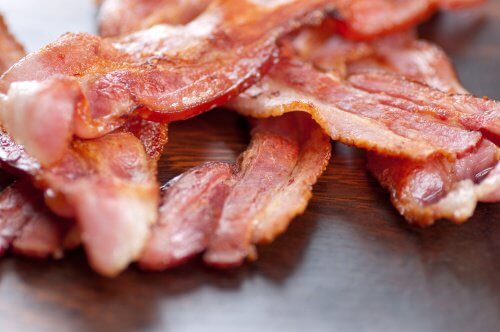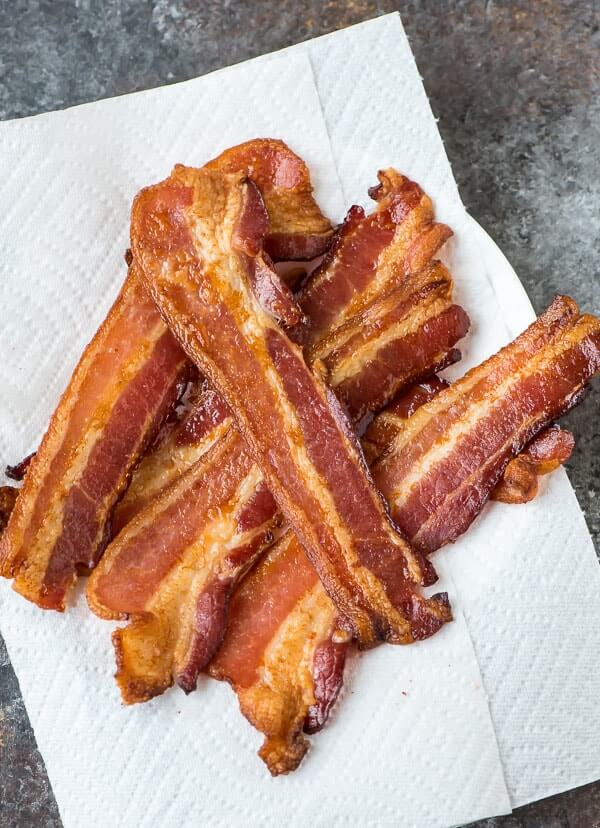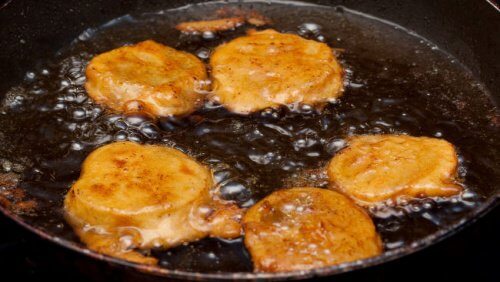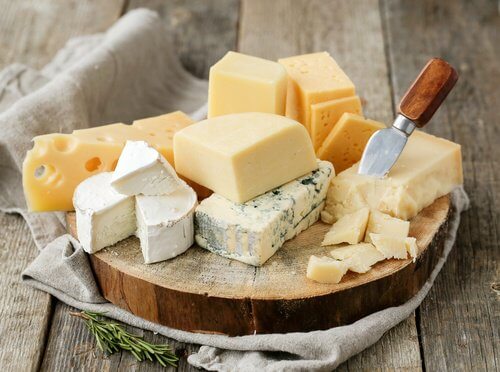Healthy Salads and What Not to Put in Them


Reviewed and approved by the pedagogue in physical education and nutritionist Elisa Morales Lupayante
I know you can probably already imagine some of the worst things to put in your salad, but some of the things on this list will surprise you. We’ll be showing you how to make truly healthy salads!
A lot of the time, ingredients that sound healthy for our salads don’t help us reach our goals, especially if you’re trying to lose weight.
If this is your goal, make sure you leave out these seven ingredients. You can even substitute them for other, healthier options.
1. Healthy salads shouldn’t have bacon
Bacon may be a healthy salad’s worst nightmare. This greasy meat can add around 400 calories and 30 grams of fat per portion.

Of course, this depends on the amount of bacon you add. Either way, add bacon and your salad’s fat and calorie counts will rise.
So what about that crunchy fake bacon topping? Many processed bacon toppings aren’t made of meat. Because of this, they don’t give you any nutritional benefit.
In fact, some contain salt, trans fats, and – believe it or not – sugar.
If you want to add something crunchy to your salad, try adding vegetables. For healthy salads, radishes and peppers are good options.
2. Toast and croutons
These might not be the most widely talked about foods when trying to diet. However, they only add unnecessary calories without giving any nutritional benefit.
Keep in mind that the majority of the time there are fried to give them a better flavor. This means you’re also adding unnecessary fat.
The right amount of bread for your salad is only two tablespoons. Regularly adding this will add around 100 calories or more.
Croutons can be substituted with one or two tablespoons of cereal. Some good examples are sesame or sunflower seeds. These give your salad a crunchy texture and give you the benefit of eating fiber from whole grains.
See also: Prepare a Delicious Sesame Chicken Recipe at Home
3. Fried foods

Ingredients like chicken, shrimp, or fish are healthy for your salads, but not when they’re fried. These fried foods are full of fat and calories. It doesn’t matter that they’re made with healthy oils.
If you eat out, a good way to avoid these foods is to read the menu thoroughly. The foods that they call “crispy”, “crunchy,” “fingers,” or “breaded” are almost always fried.
Asian salads usually have fried wonton. If you aren’t sure about it, it’s better that you ask them to leave it out. Or, you can ask them to substitute it for something grilled.
4. Creamy dressings
Your salad might be full of healthy and nutritious ingredients, but adding a dressing can easily ruin this.
If you don’t believe it, take a look at how many calories these popular dressings have:
- Bleu cheese: 146 calories and 15 grams of fat
- Ranch dressing: 126 calories and 14 grams of fat
Fat free dressings aren’t a better option. Many major companies add sugar to make up for the fat that they took out. In these, the amount of calories is usually around 60 to 80 calories per serving (2 tablespoons).
For a healthier choice, you can add a homemade vinaigrette to your salads.
Read more: 10 Healthy and Easy Vinaigrette Recipes
5. Fatty cold cuts
Processed cold cuts aren’t a good addition to your salad, either. Salami is one of the most popular ingredients in salads, but did you know that just a thin slice of salami has 43 calories and 3 grams of fat?
That might not seem like much, but if you take into account that a salad can have between 4 to 5 slices of salami, it all adds up.
Cold cuts are relatively high in salt, as well. This increases your sodium intake. Chicken, lean beef or turkey are healthier options for your salad.
6. Glazed meats
Honey glazed chicken or ham aren’t very good options either, unfortunately. While they do provide flavor, they also provide some unnecessary fat.
It’s better to go for dried fruits. We recommend adding a small amount of nuts, cranberries or almonds. This allows you to enjoy the flavor of dry fruits and their benefits without the calories and sugar.
7. Cheese

Don’t worry! Cheese isn’t necessarily bad if you choose the lightest options. Popular options like cheddar are a source of saturated fat, though.
The important thing is that you know how much you’re adding to your salad. Most of the time, it’s better to leave it out.
If you decide to eat it, you need to make sure that it is real cheese. It shouldn’t have “additives” that give it flavor and calories without nutritional value.
The recommended portion size is 1 ounce. You can use a digital scale to make sure you don’t add more than necessary.
If you want to lose weight, it’s also a good idea to make your salads at home. Get involved in making your meals so you know what you’re eating. This will also help you to count calories.
Combine this with daily exercise. And remember: talk to your doctor before you make any major changes to your routine.
All cited sources were thoroughly reviewed by our team to ensure their quality, reliability, currency, and validity. The bibliography of this article was considered reliable and of academic or scientific accuracy.
- Souza RJ., Mente A., Maroleanu A., Cozma AI., et al., Intake of saturated and trans unsaturated fatty acids and risk of all cause mortality, cardiovascular disease, and type 2 diabetes: systematic review and meta analysis of observational studies. BMJ, 2015.
- Kotemori A., Ishihara J., Zha L., Liu R., et al., Dietary acrylamide intake and risk of breast cancer: the japan public health center based prospective study. Cancer Sci, 2018. 109 (3): 843-853.
- Stanhope KL., Sugar consumption, metabolic disease and obesity: the state of the controversy. Crit Rev Clin Lab Sci, 2016. 53 (1): 52-67.
This text is provided for informational purposes only and does not replace consultation with a professional. If in doubt, consult your specialist.








